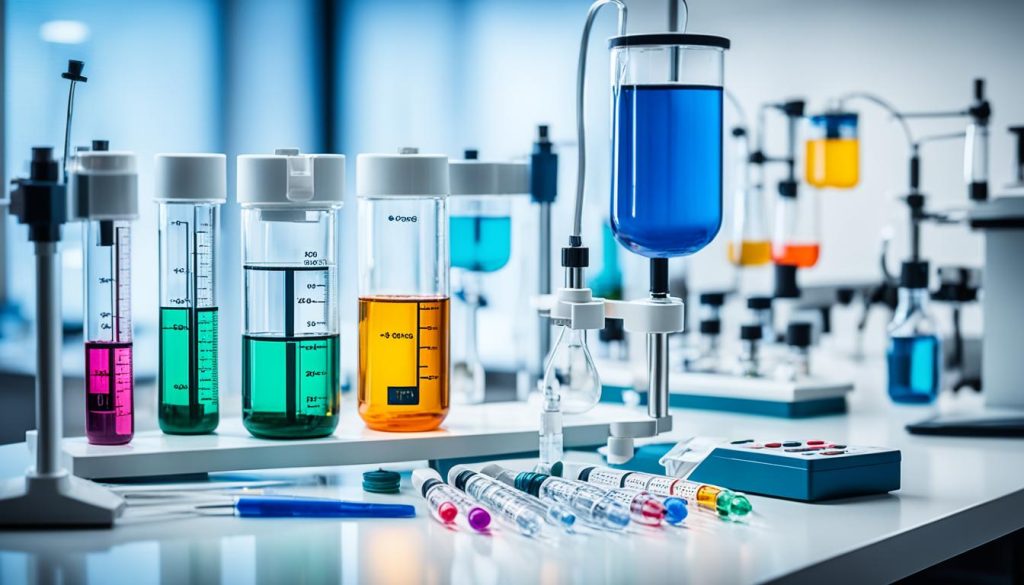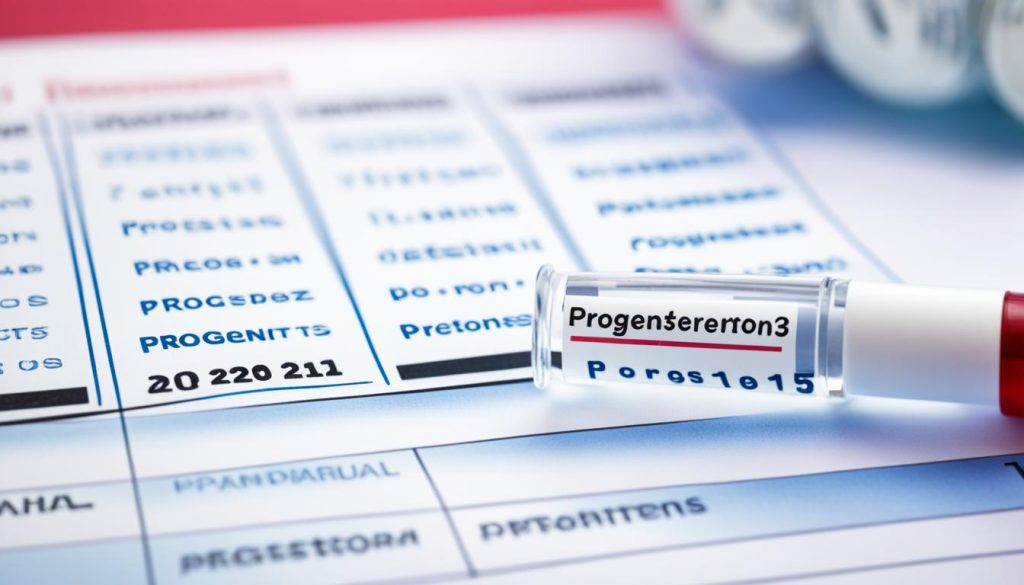Hormone testing is crucial for understanding and diagnosing hormone imbalances in both men and women. The optimal timing for hormone testing depends on the specific hormones being evaluated. It is important to consider the menstrual cycle for women and to understand when certain hormones like estrogen, progesterone, and testosterone fluctuate. The best time to test estrogen levels is typically on day 3 of the menstrual cycle, while progesterone levels are highest around 5-7 days following ovulation. Testosterone levels should be tested in the morning when they are highest. It is also important to test other hormones like insulin and thyroid hormones to get a comprehensive evaluation of hormone balance. It is advised to consult with a healthcare provider, such as a functional medicine practitioner or a gynecologist, to determine the best timing for hormone testing based on individual symptoms and health concerns.
When is the Best Time to Test for Hormone Imbalance?
The menstrual cycle plays a crucial role in determining the optimal timing for hormone testing. Understanding the different phases of the menstrual cycle can help in scheduling tests accurately. The menstrual cycle starts on day 1 when bright red blood is seen and typically lasts around 28 days. Ovulation, when an egg is released, usually occurs on day 14, but this can vary for each individual. Testing hormone levels at specific points in the cycle, such as on day 3 for estrogen and on days 19-22 for progesterone, allows for a better understanding of hormonal fluctuations and potential imbalances.
It is important to track one’s menstrual cycle and symptoms to identify the best time for hormone testing and to consult with a healthcare provider for guidance.

| Phase of Menstrual Cycle | Timing for Hormone Testing |
|---|---|
| Menstruation (Day 1) | No specific hormone testing recommended |
| Follicular Phase (Menstruation to Ovulation) | Estrogen levels can be tested on day 3 of the cycle |
| Ovulation (Day 14, on average) | No specific hormone testing recommended |
| Luteal Phase (Ovulation to Menstruation) | Progesterone levels can be tested on days 19-22 of the cycle |
By understanding the hormonal cycle for testing, individuals can optimize the timing of their hormone tests and gain valuable insights into their hormone balance and overall health.
Sources:
- Ehrstrom, S., Lawrie, L., & Wallerstedt, S. (2012). Human Behavioural Biology. Western Sydney University.
- Mayo Clinic. (2021). Normal and abnormal menstrual bleeding. Retrieved from https://www.mayoclinic.org/normal-and-abnormal-menstruation/expert-answers/menstrual-cycle/faq-20058321
- Prior, J. C. (2008). Ovarian follicular dynamics and menstrual irregularities. In Climacteric Medicine-Where Do We Go? (pp. 3-13). Karger Publishers.
Importance of Testing Hormone Levels
Testing hormone levels is a crucial step in the diagnosis of hormone imbalances and gaining a deeper understanding of the underlying causes of symptoms. By evaluating sex hormones like estrogen, progesterone, and testosterone, healthcare providers can gather valuable insights into the root causes of various issues such as weight gain, fatigue, mood swings, and irregular periods.
Hormone levels are not static throughout the month and can fluctuate significantly. This is why it is not uncommon for blood tests to show hormone levels within the normal range, even when imbalances are present. To get a comprehensive evaluation of hormone balance, healthcare providers may recommend hormone panels that include testing for various hormones and markers.

These comprehensive hormone panels provide a more comprehensive picture of hormone imbalances, allowing for targeted treatment and management plans. By assessing a range of hormones and markers, healthcare providers can identify specific imbalances and tailor treatment strategies accordingly.
Consulting with a qualified healthcare provider, such as a functional medicine practitioner or a reproductive endocrinologist, is advisable for accurate hormone testing and proper interpretation of results. They have the expertise to determine the best timing for hormone testing based on individual symptoms and health concerns.
Understanding hormone levels and addressing imbalances is key to optimizing health and well-being. By gaining insights through hormone testing, individuals can take proactive steps towards achieving hormone balance and mitigating the impact of imbalances on their overall health.
Recommended Timing for Estrogen Testing
When it comes to evaluating estrogen levels, timing is key. It is recommended to test estrogen levels on day 3 of the menstrual cycle. On this day, along with follicle-stimulating hormone (FSH) and luteinizing hormone (LH), blood tests for estradiol are typically performed.
Testing estrogen levels at the beginning of the menstrual cycle provides valuable insights into brain-ovarian communication and helps assess how the brain is interacting with the ovaries. It is important to note that hormone levels can vary depending on the phase of life a person is in. During the reproductive years, estradiol is the predominant form of estrogen.
By testing estrogen levels on day 3 and possibly between days 19-22 (approximately 5-7 days after ovulation), we can gain a better understanding of how estrogen levels impact symptoms and overall hormone balance. This information is crucial for evaluating estrogen levels accurately and addressing any imbalances that may be present.
| Timing | Actions |
|---|---|
| Day 3 of menstrual cycle | Test estrogen levels, along with FSH and LH |
| Days 19-22 (5-7 days after ovulation) | Possible additional testing to evaluate estrogen levels |
Optimal Timing for Progesterone Testing
Progesterone levels play a crucial role in maintaining hormonal balance during the menstrual cycle. Understanding the optimal timing for progesterone testing can provide valuable insights into hormone levels and overall health.
During the luteal phase of the menstrual cycle, which is the second half of the cycle following ovulation, progesterone levels are at their highest. This phase typically occurs between days 15-28 of a 28-day cycle. Testing progesterone levels between days 19-22, when progesterone levels should be elevated, can help evaluate hormone balance and detect any potential imbalances.
It is important to accurately track ovulation to determine the best time for progesterone testing. This can be done through methods such as monitoring basal body temperature and evaluating cervical mucus changes. Women who have irregular cycles or do not ovulate on day 14 may need to adjust the timing of progesterone testing.
Consulting with a healthcare provider, such as a gynecologist or a reproductive endocrinologist, is advised to establish the appropriate timing for progesterone testing and interpret the results accurately. Sharing accurate cycle tracking data with the healthcare provider can facilitate a comprehensive evaluation of hormone balance and aid in the diagnosis of any potential imbalances.
Benefits of Optimal Timing for Progesterone Testing
| Benefits | Explanation |
|---|---|
| Accurate Assessment | Testing progesterone levels during the luteal phase provides an accurate assessment of hormone balance and helps identify any potential imbalances. |
| Evaluation of Fertility | Progesterone plays a crucial role in fertility. Testing progesterone levels at the optimal time can provide insights into fertility and help detect any issues. |
| Understanding Menstrual Irregularities | Progesterone imbalances can lead to menstrual irregularities. Testing progesterone levels at the right time can help understand and address these irregularities. |

By ensuring optimal timing for progesterone testing, individuals can gain valuable information about their hormone levels and address any imbalances effectively. Working with a healthcare provider and following recommended testing guidelines can help individuals take proactive steps towards achieving hormonal balance and overall well-being.
Timing Testosterone Testing
When it comes to testing testosterone levels, timing is key. Testosterone levels can vary depending on gender and time of day. In men, testosterone levels tend to be highest in the morning. Therefore, it is recommended to schedule testosterone testing in the morning to obtain the most accurate results.
However, it’s important to note that testosterone levels can also fluctuate in response to various factors such as physical activity, sexual stimulation, and puberty. These fluctuations can impact the accuracy of test results if not taken into consideration.

For women, testosterone testing is particularly important in assessing hormone balance, especially in conditions like polycystic ovarian syndrome (PCOS). Elevated testosterone levels in women can lead to symptoms such as acne, irregular periods, and unwanted hair growth.
When testing testosterone levels, it is advisable to measure both total testosterone and free testosterone, as well as sex hormone-binding globulin (SHBG). This comprehensive panel of tests provides a more complete picture of testosterone levels and their potential impact on overall hormone balance.
To ensure the most accurate results, it is always recommended to consult with a healthcare provider who can guide you on the best timing for testosterone testing based on individual symptoms and health history.
Testing Hormones When Menstruation is Absent
In cases where menstruation is absent or irregular, testing hormone levels can still be done to evaluate hormonal imbalances. Amenorrhea, the absence of a period, can be classified as primary or secondary, depending on whether a person has never had a period or has previously had a period. Testing for hormone imbalances in cases of amenorrhea can involve assessing various hormones like FSH, LH, estradiol, prolactin, thyroid panel, free testosterone, and others. These tests, along with a thorough evaluation of symptoms and medical history, can help identify the underlying cause of amenorrhea and guide appropriate treatment. Consulting with a healthcare provider, such as a gynecologist or a reproductive endocrinologist, is recommended in such situations.
| Hormones to Test | Description |
|---|---|
| FSH (Follicle-Stimulating Hormone) | Evaluates ovarian function and follicle development |
| LH (Luteinizing Hormone) | Assesses the release of an egg for ovulation |
| Estradiol | Determines estrogen levels and ovarian health |
| Prolactin | Checks for elevated levels that may affect menstruation |
| Thyroid Panel | Assesses thyroid gland function and hormonal balance |
| Free Testosterone | Measures levels of unbound testosterone in the bloodstream |
Summary
Testing hormone levels even in the absence of menstruation is crucial for evaluating hormonal imbalances and identifying the underlying causes of amenorrhea. By assessing various hormones and consulting with healthcare providers, individuals can gain valuable insights into their hormone balance and develop appropriate treatment plans.
Conclusion
Hormone testing is a crucial tool for diagnosing and understanding hormone imbalances. By testing hormone levels at the optimal timing, individuals can gain valuable insights into their hormone balance and underlying health concerns. For women, testing estrogen on day 3 of the menstrual cycle and progesterone around days 19-22 provides a comprehensive evaluation of hormone levels. Morning testing is recommended for accurate testosterone results in both men and women.
It is important to recognize the importance of hormone testing in addressing symptoms and optimizing overall health. Hormone imbalances can manifest in a variety of ways, impacting mood, energy levels, weight, and reproductive health. By consulting with a qualified healthcare provider, such as a functional medicine practitioner or a reproductive endocrinologist, individuals can determine the best timing for hormone testing and interpret the results accurately. This professional guidance ensures that hormone testing is conducted in a way that is tailored to each individual’s specific needs and circumstances.
Understanding hormone levels and addressing imbalances is essential for taking proactive steps towards optimizing health and well-being. Whether testing is done during the regular menstrual cycle or in the absence of menstruation, it provides valuable information for finding the underlying causes of symptoms and guiding appropriate treatment. By utilizing the insights gained from hormone testing and working closely with healthcare providers, individuals can effectively address hormone imbalances and achieve optimal hormone balance for improved overall health.




